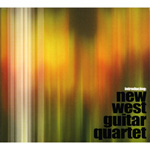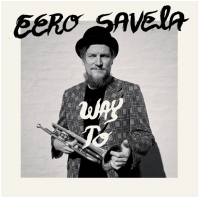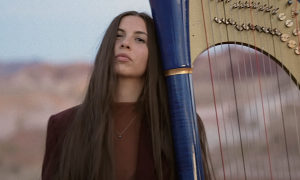Home » Jazz Articles » Interview » Lou Donaldson: Old School... and Still Cool
Lou Donaldson: Old School... and Still Cool
I think that's why my... music still sells, because it has blues feeling and it swings.
Donaldson, who recorded for Blue Note from 1952 to 1963 before briefly moving to the Chess label subsidiaries Argo and Cadet from 1964 to '66, was an early disciple of the legendary Charlie Parker.
But Parker's influence faded as Donaldson began to develop his own distinctive approach—a bluesy, soulful sound that used organ and guitar as an essential foundation for his sax playing. Donaldson made his Blue Note debut on a Milt Jackson recording, then followed with his first recording as a leader, featuring Horace Silver, Gene Ramey and Art Taylor. Donaldson also recorded with Thelonious Monk, and co-led a quintet recording with Clifford Brown in 1953. The following year he was part of the legendary live recordings, A Night At Birdland, Vols. I & II, along with Brown, Silver, Art Blakey and Tommy Potter. Donaldson's memorable tune, "Blues Walk," became a major crossover hit in 1958, and subsequent albums such as Alligator Boogaloo (marking his first collaboration with organist Dr. Lonnie Smith) produced crossover hits as well.
Today, Donaldson continues to tour Europe, Japan and the U.S., still laying down the soul-groove sound he perfected decades ago. And as you'll see in this interview, Donaldson's comments are straight ahead with no-holds-barred... just like his music.
All About Jazz: Growing up in North Carolina, you started out playing the clarinet. How did you end up playing alto saxophone?
Lou Donaldson: My mom taught piano, and I didn't really like playing it, so I started playing clarinet. And I actually kept up with that instrument, playing it in the marching band at North Carolina A&T College in Greensboro. Then I went into the Navy in 1945 and auditioned to get into the marching band playing the clarinet. But they also had a dance band, and the guy at the audition asked me if I could play alto saxophone. Naturally, I told him yeah, because I wanted to make sure I got in the band. I had never even touched an alto sax before, but I guess because I played the clarinet so well, he never asked me to play the sax for him—he just gave me one. So I went back to barracks with it and started to practice. By the time I actually had to play it in the dance band, I'd gotten to the point where I could play it pretty well.
AAJ: After your Navy service, when did you decide to focus on alto sax instead of clarinet?
LD: Well, I went back to A&T to get my degree in political science, and I kept playing both instruments, but mainly the clarinet. But I ended up switching to sax because of a baseball injury. I was a good baseball player, if I say so myself. But back then they wouldn't even let a black cat in a big league ballpark. Anyway, I was a third baseman and a ball ricocheted off a rock during a game and smashed my little finger. We had more rocks on our infield than dirt, I think. So when I tried to play clarinet, I kept getting a squeak because my puffed-up finger couldn't cover the hole. So that's when I decided to switch to alto sax. And that's also when I decided to give up baseball and concentrate on music.
AAJ: How did you end up getting from Greensboro to New York City?
LD: I started playing with a show band in clubs in Greensboro, and guys like Illinois Jacquet and Dizzy Gillespie would come through. I'd go and sit in with them, and they liked my playing and kept encouraging me to come to New York. But I was kind of afraid—I thought I wasn't good enough. But finally in 1950 I decided to make the move to New York. And it turned out I really didn't have a problem, because I'd already met so many musicians in Greensboro and was able to use those connections. I was living in Harlem, so I started off auditioning at clubs there and I had no problem at all getting going.
AAJ: Like most alto sax players in the early 1950s, you were often compared to Charlie Parker, and a lot of critics say your sound was shaped by his approach. What's your view on that?
LD: Well, I had heard plenty of saxophone players before I heard him. I heard Johnny Hodges, Pete Brown, Tab Smith, Benny Carter, a lot of people. But once I heard Charlie Parker, he was so dominant, he influenced me a lot at that time. Eventually I developed my own style, but there's no doubt he was the best. I actually got my record deal with Blue Note because of Bird. I was playing at Minton's Playhouse and Alfred Lion heard me playing like Parker and offered me a recording date. It was a session that featured a group that ended up being the Modern Jazz Quartet—Milt Jackson, John Lewis, Percy Heath, and Kenny Clarke. Then we did sessions that included Art Blakey and Horace Silver and a few others.
AAJ: In addition to the musicians who were on that recording, you played and recorded with some other legendary musicians in those early years—Thelonious Monk, Clifford Brown and quite a few others.
LD: Yeah, I worked for a little while with Monk... . as much as you could work with him. He was a weird guy. I played a lot with Milt Jackson in those days too. And a lot of those other guys like Art Blakey and Horace Silver were assembled for a session for Blue Note Records. I was already with Blue Note at that time, so I ended up bringing a lot of guys to the label—including Clifford Brown.
AAJ: How did you end up getting Clifford Brown to Blue Note?
LD: Well, a lot of people think otherwise about how Clifford got to New York, but you know how this business is. A lot of things happen that certain people get credit for, and it turns out they really didn't know anything about it. I was on tour in Wilmington, Delaware and I happened to see Clifford in an R&B band called Chris Powell and the Blue Flames. I'd heard about him—back then musicians would really spread the word about guys who could play. After hearing him, I went up to him and told him, "You need to make a record date. Come on and let's go to New York." And he did.
AAJ: Who are some of the other musicians you helped record on Blue Note—or get them wider recognition?
LD: I got Grant Green to Blue Note—and Stanley Turrentine too. I heard Stanley playing with a group called the Three Sounds, and I got Blue Note to sign them. I heard Grant playing in a club in East St. Louis that happened to be called the Blue Note. I played a lot in St. Louis when Gaslight Square was happening. There was a disk jockey then called Spider Burke, and he used my tune "Blues Walk" as his theme song, so I had that going for me. Anyway, the St. Louis clubs closed at 2 a.m. and the East St. Louis clubs stayed open until 5 or 6 a.m., so I'd head over there to eat after I finished playing. That's where I saw Grant and met him. I was a little reluctant to do anything with him because frankly, he was strung out. But I thought as good as this cat is playing, maybe I could handle it. So Ibrought him to New York and he really did well.
AAJ: You were also one of the first mainstream jazz group leaders to incorporate Latin percussion in your group when you added Ray Barreto to your band. How did that come about?
LD: I think I was the first one to use a conga player in a mainstream jazz group. I had acouple of dates and the first drummer I used—who shall remain nameless—showed up high and couldn't keep time when he played, His replacement showed up high too and had the same problem. I just got disgusted and said that we weren't going to have this. I knew we weren't going to sell any records if we couldn't lay down that rhythm. Because the pulse is what really brings people to the music—even rap musicians are smart enough to make a rhythm track first. Unfortunately, they start rapping on top of it. I can't understand anything they say except the cursing—I can understand that! Anyway, I used to see Ray Barreto all the time in the clubs and he kept asking to sit in. So I thought of him, called him up and he joined the band. It really worked out great.
AAJ: You developed a sound—especially with your 1960s Argo and Blue Note recordings like Signifyin', Alligator Boogaloo and The Midnight Creeper—that expanded the blues-based jazz organ trio sound and made it a little funkier as well. That sound still has a strong appeal, judging from the way the reissues of those recordings continue to sell—and the fact that rappers have sampled a lot of your music as well. How do you explain that continued popularity?
LD: Well, first of all, I don't think my music was really funk. Put that music out against James Brown and Earth, Wind & Fire and you'll see that that it's not really funk—it's just music that swings. It's really groove music that's made for people to dance to. That's what jazz used to be about. But what's also essential is that my music has a blues flavor, because when you get down to it, that's what jazz is. And that's the problem with a lot of music today... there's no blues feeling. Blues is the backbone, and if you don't have it in jazz it's like taking sugar out of a cake. So I think that's why my old music still sells, because it has blues feeling and it swings.
Selected Discography
Lou Donaldson, Relaxing on the Sea: Live on the QE2 (Chiaroscuro, 2000)Lou Donaldson, Caracas (Milestone, 1993)
Lou Donaldson, Play the Right Thing (Milestone, 1990)
Lou Donaldson, Back Street (Muse, 1982)
Lou Donaldson, Sweet Lou (Blue Note, 1974)
Lou Donaldson, Sassy Soul Strut (Blue Note, 1973)
Lou Donaldson, Sophisticated Lou (Blue Note, 1972)
Lou Donaldson, Everything I Play is Funky (Blue Note, 1969)
Lou Donaldson, The Midnight Creeper (Blue Note, 1968)
Lou Donaldson, Lush Life (Blue Note, 1967)
Lou Donaldson, Good Gracious! (Blue Note, 1963)
Lou Donaldson, The Natural Soul (Blue Note, 1962)
Lou Donaldson, Here 'Tis (Blue Note, 1961)
Lou Donaldson, LD+3: Lou Donaldson with the Three Sounds (Blue Note, 1959)
Lou Donaldson, Blues Walk (Blue Note, 1958)
Lou Donaldson, New Faces, New Sounds Vol. 2 (Blue Note, 1953)
Lou Donaldson, The Lou Donaldson Quartet/Quintet/Sextet (Blue Note, 1952)
Tags
PREVIOUS / NEXT
Support All About Jazz
 All About Jazz has been a pillar of jazz since 1995, championing it as an art form and, more importantly, supporting the musicians who make it. Our enduring commitment has made "AAJ" one of the most culturally important websites of its kind, read by hundreds of thousands of fans, musicians and industry figures every month.
All About Jazz has been a pillar of jazz since 1995, championing it as an art form and, more importantly, supporting the musicians who make it. Our enduring commitment has made "AAJ" one of the most culturally important websites of its kind, read by hundreds of thousands of fans, musicians and industry figures every month.

























